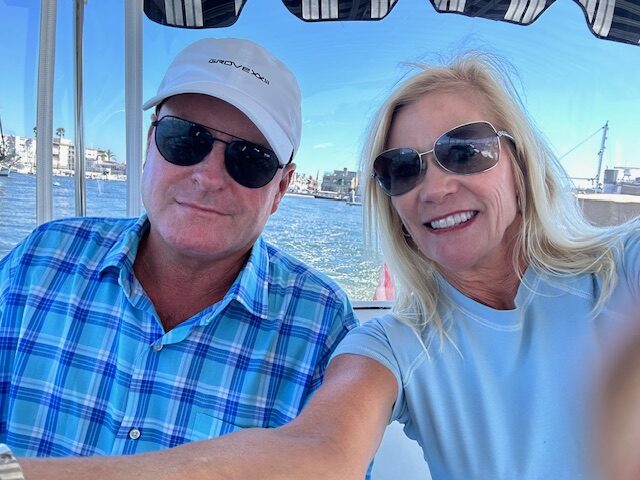Leadership excellence stands as the cornerstone of every thriving organization. Great leaders do more than manage; they inspire, innovate, and empower their teams to achieve collective goals. When leadership is executed with vision, empathy, and determination, it creates a ripple effect that drives both individual and organizational success. Consequently, leadership excellence has a direct impact on productivity, innovation, and long-term business growth.
Vision: The Foundation of Effective Leadership
Every successful business begins with a clear and compelling vision. Effective leaders set the direction for their teams and ensure that everyone understands and believes in the organization’s mission. By articulating a strong vision, leaders not only create a sense of purpose but also foster unity among team members. Moreover, this vision acts as a guiding star, helping teams navigate challenges and stay aligned with long-term objectives.
Additionally, leaders who communicate their vision effectively encourage engagement and accountability. They motivate their teams to see the bigger picture rather than getting lost in daily tasks. As a result, employees feel more connected to the organization’s goals, and this sense of purpose enhances morale and performance across the board.
Building a Culture of Trust and Collaboration
Trust is the bedrock of any successful team, and exceptional leaders know how to cultivate it. When employees trust their leaders, they are more willing to share ideas, take calculated risks, and contribute to innovation. Therefore, leaders must demonstrate integrity, consistency, and transparency in all their actions. Through open communication and ethical behavior, leaders can cultivate strong, enduring relationships.
Furthermore, collaboration flourishes in an environment of trust. Leaders who encourage teamwork and respect diverse perspectives create a culture of inclusivity and creativity. When team members feel valued and heard, they work together more effectively to solve complex problems and achieve shared goals. Consequently, trust and collaboration lead to higher employee satisfaction and improved business outcomes.
Emotional Intelligence: The Key to Influential Leadership
Emotional intelligence (EI) is increasingly recognized as a defining trait of great leaders. It encompasses self-awareness, empathy, and emotional regulation—skills that allow leaders to connect with others on a deeper level. By understanding their own emotions and those of their team members, leaders can navigate conflicts with grace and inspire loyalty. More importantly, emotional intelligence enables leaders to make informed decisions that consider both data and the human impact.
Additionally, emotionally intelligent leaders foster psychologically safe workplaces. They encourage open dialogue, listen actively, and respond to feedback with compassion. This fosters an environment where employees feel at ease expressing concerns and proposing new ideas. Ultimately, emotional intelligence not only strengthens interpersonal relationships but also enhances overall organizational resilience.

Strategic Thinking and Decision-Making
In today’s fast-paced business environment, strategic thinking is essential for maintaining a competitive edge. Leaders who think strategically analyze situations comprehensively and anticipate future challenges. They make decisions that are not only reactive but also proactive, ensuring that their organizations remain agile and adaptable. Consequently, strategic leaders position their companies to seize opportunities before competitors do.
Moreover, effective decision-making relies on a balance of intuition and evidence. Leaders must gather relevant data, consult key stakeholders, and weigh potential risks before committing to a course of action. When decisions are made thoughtfully and transparently, they foster trust and confidence among employees and investors alike. Therefore, strategic thinking serves as a crucial pillar of leadership excellence and sustainable success.
Empowering and Developing Others
Outstanding leaders understand that success is not a solo journey. They empower others by delegating responsibilities, offering guidance, and providing opportunities for growth and development. By trusting team members with meaningful tasks, leaders not only enhance productivity but also nurture future leaders within the organization. This approach fosters a culture of empowerment, where individuals feel confident in taking initiative and driving innovation.
Equally important, leaders who invest in employee development demonstrate genuine care for their teams. Through mentorship programs, continuous learning, and constructive feedback, they help employees refine their skills and achieve their career aspirations. Consequently, this investment in human capital leads to higher retention rates, stronger performance, and a more motivated workforce.
Adaptability and Resilience in Leadership
The modern business world is characterized by rapid change and uncertainty. Exceptional leaders exhibit adaptability and resilience in the face of challenges. They remain calm under pressure, pivot strategies when necessary, and inspire their teams to do the same. Rather than fearing change, resilient leaders embrace it as an opportunity for growth and improvement. This mindset enables organizations to survive disruptions and emerge stronger.
Additionally, resilient leaders lead by example during times of crisis. By maintaining a positive outlook and focusing on solutions rather than obstacles, they instill confidence in their teams. Their ability to adapt quickly ensures that the organization remains steady even amid turbulence. Consequently, adaptability and resilience are essential qualities that transform leadership from good to great.
The Role of Communication in Leadership Success
Communication is the lifeblood of effective leadership. Great leaders articulate their expectations clearly, listen actively, and foster open dialogue. By maintaining transparent communication channels, they prevent misunderstandings and encourage alignment across all levels of the organization. In fact, clear communication enhances trust and ensures that everyone is moving toward the same objectives.
Furthermore, effective leaders tailor their communication styles to suit the needs of different audiences. Whether speaking with executives, team members, or clients, they convey messages with empathy and precision. This adaptability not only strengthens relationships but also reinforces the leader’s credibility. As a result, consistent and clear communication plays a pivotal role in achieving business success.
Leading with Purpose and Integrity
Purpose-driven leadership inspires teams to transcend profit-oriented goals and contribute to a greater cause. Leaders who act with integrity and authenticity cultivate loyalty and respect from their employees. They establish ethical standards that shape the company culture and inform decision-making processes. Consequently, organizations led by principled individuals often enjoy stronger reputations and long-term sustainability.
Moreover, purpose and integrity serve as anchors during times of moral or operational ambiguity. Leaders who prioritize ethical behavior over short-term gains make choices that benefit both the business and society as a whole. This alignment between values and actions fosters a sense of pride and commitment among employees. Ultimately, leading with purpose transforms leadership into a force for positive change.
Leadership excellence is not a static trait but a continuous journey of growth, reflection, and adaptation. From setting a compelling vision to fostering trust, emotional intelligence, and strategic decision-making, great leaders shape the very fabric of business success. Moreover, by empowering others, communicating effectively, and leading with integrity, they create organizations that thrive even in challenging times. When leadership is practiced with excellence, it becomes a catalyst for innovation, resilience, and long-term prosperity.











